1 – Weather – It’s not as cold as people think. While it is called Iceland, and it is winter, thanks to the Gulf Stream it’s warmer there than most people expect. Average temperatures in winter are around freezing. However, it can be windy, so even with an air temperature of 30-degrees F, it can feel much colder. Also, if you plan to photograph Northern Lights, you’ll be standing outside for extended periods of time at night. What’s all this mean? Warm boots. Dress in layers and have enough of them to stay warm. Good gloves. Maybe even chemical heat packs. You don’t need to look like the Michelin man, but dress appropriately. You’ll also likely see all manners of weather, from cloudy to sunny to snowing to raining. Be forewarned, and be prepared for the wet, not just the cold.
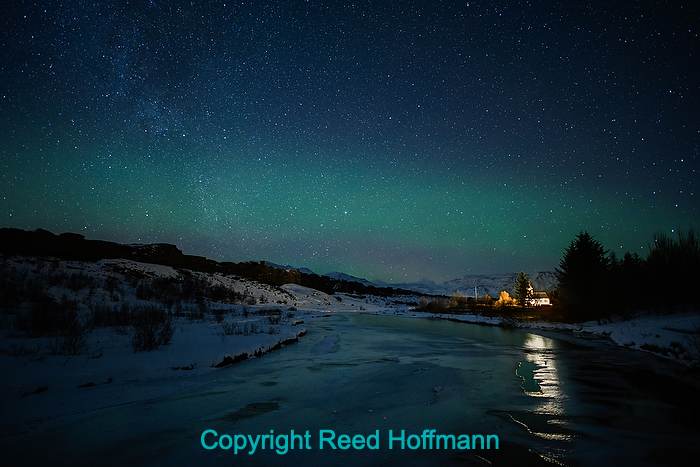
With clouds forecast for the next few days, our guide called the night before our trip started to ask if we’d like to try to shoot Northern Lights that night. Of course we said yes. He picked us up at our hotel in Reykjavik and drove about an hour into the countryside. The lights were fairly dim, but it did give us an opportunity to find out how cold we’d feel when out at night. This photo is a composite of five exposures, ranging from 20-seconds to 1/15 second. Nikon Z7, Manual exposure, Sunny white balance, ISO 2000, f/1.8, Nikkor AF 20mm f/1.8G lens.
2 –Northern Lights – This phenomenon is one of the main reasons people visit Iceland in winter. However, you need sunspot activity and a clear night to view them. That activity can be tracked and forecasts made, but they’re most accurate within a few days. What all this means is that you can’t plan a trip months ahead knowing that the sunspots (and clouds!) will cooperate. Your best chance to ensure you see them is to stay long enough. And, of course, you want to be someplace dark. If you’re in a city, you’ll need to book an evening tour that takes you out. We spent a week in Iceland outside Reykjavik on our trip, and had two good nights of Northern Lights. And, of course, you need night, so winter is the time.
3 – The ice in Iceland – Iceland is actually a pretty green country. Greenland, on the other hand, is mostly ice. But we’re not going to get into that. The point is, Iceland does have a lot of ice, and there’s more of that in winter. Glaciers, ice caves, icebergs and glacial lagoons make for great photos, but the most dramatic are if you can visit a black sand beach where bits of ice wash up. The classic photos there are with a tripod, neutral density filter and long exposure. Not surprisingly, you’ll find more of that ice in winter, and you have the added bonus of being able to make pictures with the sun low in the sky (if you have sun). In summer sunset is very late at night and sunrise very early in the morning. But in winter, the short days make sunrise and sunset easy to shoot. But again, you need the sun, and there are often clouds. However, there’s one really big caution when shooting on the beaches. Every year people die getting washed out to sea. Rogue waves can come crashing in, and thanks to the very cold water, if you get pulled in, you don’t have much time to try to get out. People do stupid things there all the time, like this woman recently. The rule is, never turn your back on the water. And be ready to grab your tripod and run.

This is that classic shot most people want to make at Diamond Beach of the ice washed up onto the black sand, using a tripod and a heavy neutral density filter. Nikon Z7, Aperture Priority, Sunny white balance, ISO 125, 13-seconds at f/8 in Matrix metering, -0.7 EV, Nikkor 18-35mm lens at 18mm.
4 – Snow – Another feature that’s missing in summer is snow. While Iceland doesn’t get a lot of snow, it does get enough to make for some beautiful landscapes. That also means you need good footwear, and you’ll want some sort of spikes for your boots for the places that are icy. The most treacherous footing we encountered was one morning with a fresh coat of snow on top of ice. I fell three times. Ouch!
5 – Wildlife – There’s not a lot of native wildlife in Iceland. And while puffins are fantastic to photograph, they don’t stay around for winter. Icelandic horses, on the other hand, make for great pictures. They’re very friendly, but keep in mind two important rules. One, don’t feed them. The locals don’t mind you stopping to take pictures, but they absolutely don’t want you feeding their horses anything. And two, never, never refer to them as ponies! Unless you want to hear a long explanation of why they’re not 🙂
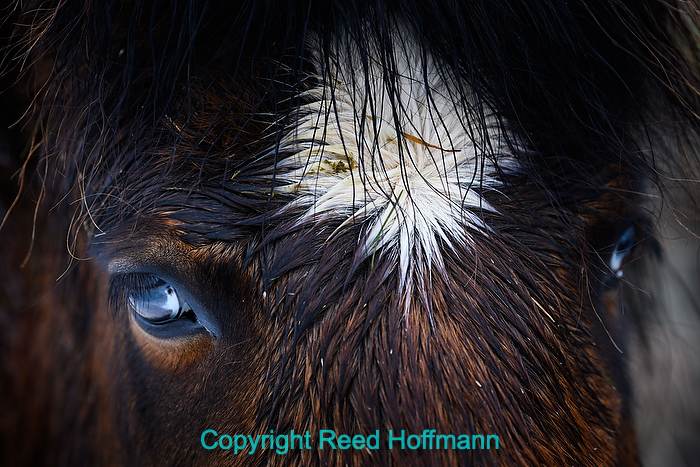
An Icelandic horse in the rain, at one of our stops during a wet and dreary day. When the sky is grey and flat, I always tell people to try to keep it out of their photos. Close-ups like this accomplish that. Nikon Z7, Aperture Priority, Sunny white balance, ISO 320, 1/250 at f/4.5 in Matrix metering, -0.7 EV, Nikkor 70-200mm lens at 200mm.
5 – Guide – Lots of people do Iceland on their own. And in the summer that can be pretty easy and safe. But in winter I’d strongly recommend hiring a local guide. They’ll have a four-wheel drive vehicle with not just snow tires, but studded snow tires, and know where it is and isn’t safe to go. Plus, if you find a guide who’s also a photographer, like ours, then they’ll help put you in the right places at the right times. Two of the hotels we stayed at on the southern coast were in excellent places to photograph the Northern Lights. He knew that, which is why we stayed there. A good guide is one of the most important resources a photographer can have there.
Okay, that’s the basics. Here are some more of my favorite photos from the workshop and stories that go along with them. I’ll be returning again in the summer of 2021, this time exploring the northwestern area with the same guide. Let me know if you’re interested in joining me. And if you want to see the entire gallery of photos from this trip, click here.
If you like this story, please share it with your friends and let them know about the links on photography that I post on my business Facebook page. I’m also on Instagram and Twitter, @reedhoffmann. And if you’re curious about the workshops I teach, you can find them here.
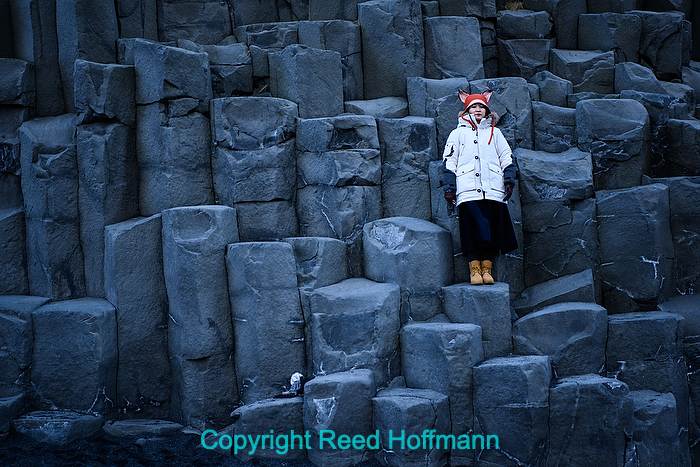
Reynisfjara is another location with a black sand beach, and it also has basalt columns that are popular posing spots for tourists. Nikon Z7, Aperture Priority, Sunny white balance, ISO 160, 1/100 at f/3.2 in Matrix metering, -1.3 EV, Nikkor VR Zoom 24-70mm f/2.8 lens at 70mm.
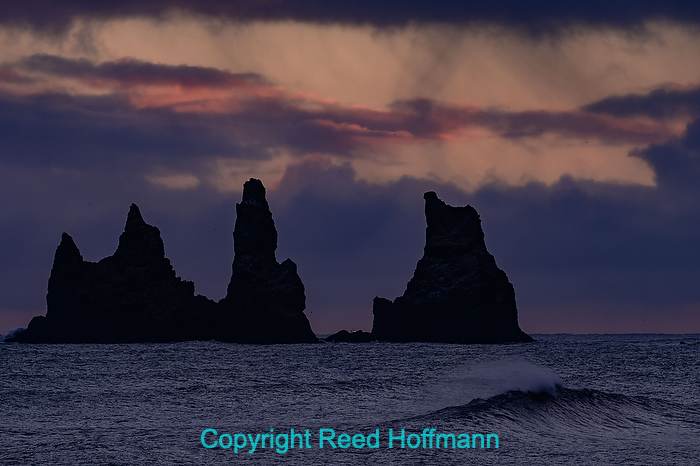
Off the beach at Reynisfjara are some basalt sea stacks. We shot this from the nearby town of Vik, and were lucky to get a little light and color in the sky at sunset. Nikon Z7, Aperture Priority, Sunny white balance, ISO 200, 1/500 at f/4 in Matrix metering, -1.7 EV, Nikkor VR Zoom 70-200mm f/2.8 lens at 180mm.
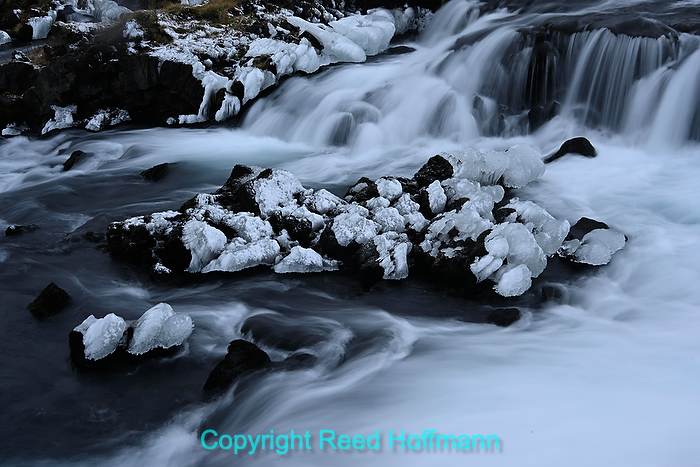
We drove past this little stream and turned around to come back to it. We also re-visited it on a sunny day, but this is one of those scenes that’s much better without bright light. In this case I chose not to use a variable neutral density filter, as I thought a little blur in the water was better than a lot. And I took advantage of my camera’s ability to go below its base numbered ISO. The fresh dusting of snow on the ice-covered rocks was literally the icing on the cake for the scene. Nikon Z7, Aperture Priority, Sunny white balance, ISO 31, 1/2 at f/22 in Matrix metering, -0.3 EV, Nikkor VR Zoom 24-70mm f/2.8 lens at 48mm.
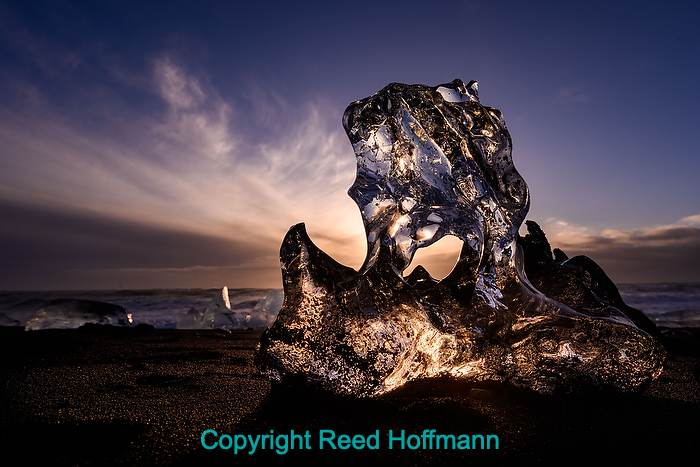
When the sun broke through the clouds at Diamond Beach, I suggested that my group get their cameras low and shoot the sun through the ice. Not only did that make a nice picture, but by blocking the sun that way we avoided having a burned out sky. Nikon Z7, Aperture Priority, Sunny white balance, ISO 64, 1/320 at f/10 in Matrix metering, -1.0 EV, Nikkor 18-35mm lens at 22mm.
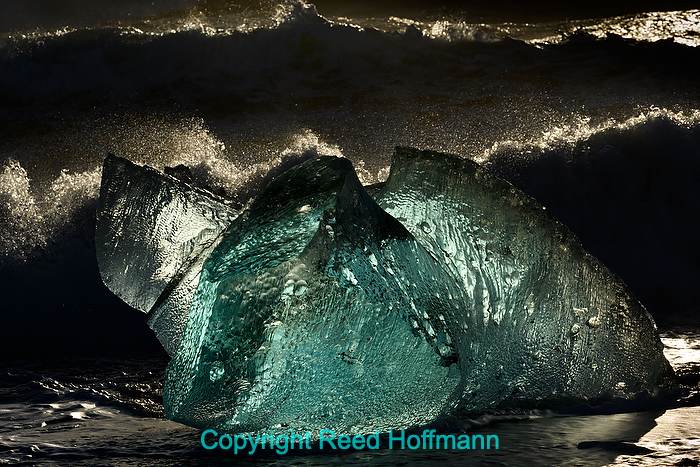
I loved the way the sun lit up this piece of ice from behind, so positioned my camera to shoot it against the backlit waves coming in to provide a dark background. Nikon Z7, Aperture Priority, Sunny white balance, ISO 100, 1/1250 at f/11 in Matrix metering, -1.7 EV, Nikkor 70-200mm lens at 175mm.
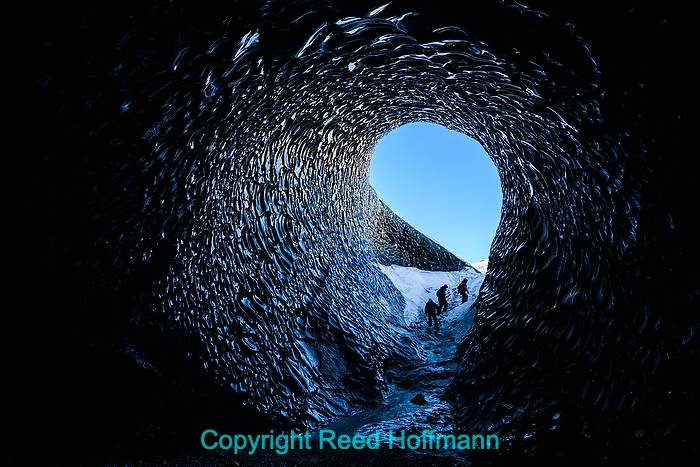
In summer the ice caves are filled with water, but in winter, you can drive up on the glaciers and walk through them. My entire group agreed this was one of the highlights of our trip. Nikon Z7, Aperture Priority, Sunny white balance, ISO 64, 1/50 at f/8 in Matrix metering, -1.7 EV, Nikkor 18-35mm.
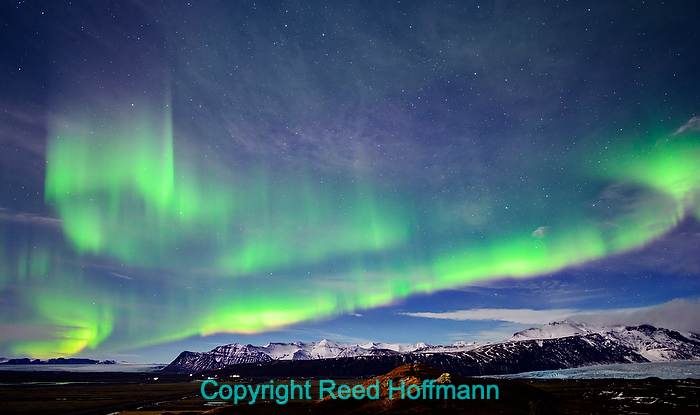
Hotel Skatafell was a great location for us to shoot Northern Lights. A short walk out back gave us views like this, and we had one really good night of lights. Nikon Z7, Manual exposure, Sunny white balance, ISO 1600, 4-seconds at f/1.8, Nikkor 20mm lens.
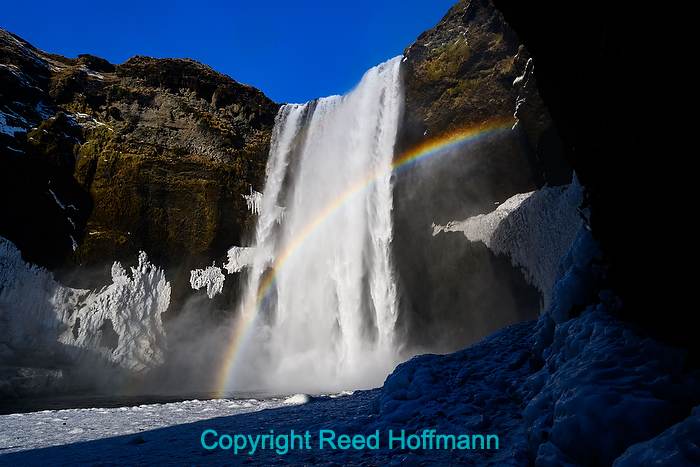
We’d visited Skogafoss early on our trip, but it was overcast then. So driving past it on the way back we decided to stop again because the sun was out, and we were very glad we did. I used a polarizing filter to help the rainbow stand out a bit better, but had to clean it between each shot because of the spray. Also, you couldn’t get close to it like this without spikes for your boots. The wet ice was treacherous. Nikon Z7, Aperture Priority, Sunny white balance, ISO 100, 1/320 at f/6.3 in Matrix metering, -0.7 EV, Nikkor 18-35mm lens at 20mm.
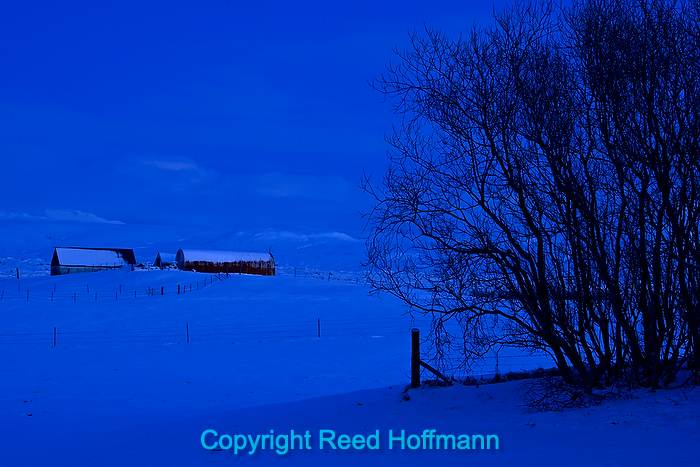
Our final night along the southern coast was at Hotel Laekur. This was after sunset, a bit past 6pm. This would have been a good location to see the Northern Lights, but they didn’t make an appearance that night. Nikon Z7, Aperture Priority, Sunny white balance, ISO 250, 1.6 at f/16 in Matrix metering, -1.0 EV, Nikkor 70-200mm lens at 135mm.
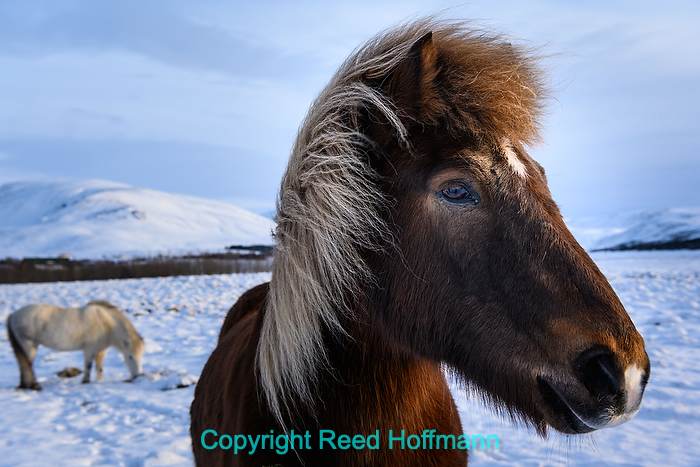
This was on the final day of our trip, driving back to Reykjavik. These two horses were in a pasture off the side of the road, and our guide managed to get our big van and trailer pulled in so we could photograph them. The composition is a classic example of strong foreground with a supporting background. I just had to wait for the horse to turn its head into the wind and light. Nikon Z7, Aperture Priority, Sunny white balance, ISO 200, 1/160 at f/6.3 in Matrix metering, 0.0 EV, Nikkor 24-70mm lens at 38mm.

